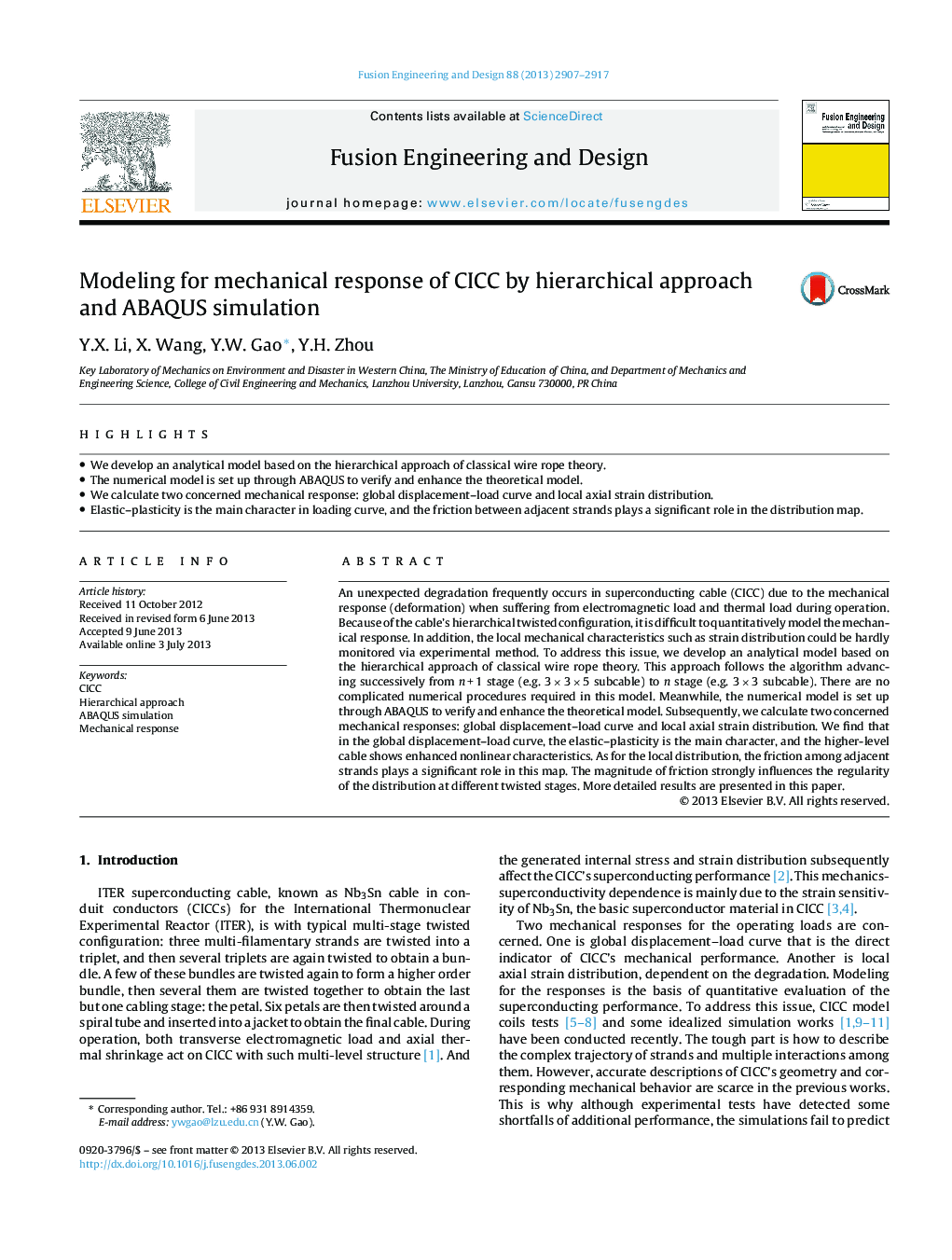| Article ID | Journal | Published Year | Pages | File Type |
|---|---|---|---|---|
| 271385 | Fusion Engineering and Design | 2013 | 11 Pages |
•We develop an analytical model based on the hierarchical approach of classical wire rope theory.•The numerical model is set up through ABAQUS to verify and enhance the theoretical model.•We calculate two concerned mechanical response: global displacement–load curve and local axial strain distribution.•Elastic–plasticity is the main character in loading curve, and the friction between adjacent strands plays a significant role in the distribution map.
An unexpected degradation frequently occurs in superconducting cable (CICC) due to the mechanical response (deformation) when suffering from electromagnetic load and thermal load during operation. Because of the cable's hierarchical twisted configuration, it is difficult to quantitatively model the mechanical response. In addition, the local mechanical characteristics such as strain distribution could be hardly monitored via experimental method. To address this issue, we develop an analytical model based on the hierarchical approach of classical wire rope theory. This approach follows the algorithm advancing successively from n + 1 stage (e.g. 3 × 3 × 5 subcable) to n stage (e.g. 3 × 3 subcable). There are no complicated numerical procedures required in this model. Meanwhile, the numerical model is set up through ABAQUS to verify and enhance the theoretical model. Subsequently, we calculate two concerned mechanical responses: global displacement–load curve and local axial strain distribution. We find that in the global displacement–load curve, the elastic–plasticity is the main character, and the higher-level cable shows enhanced nonlinear characteristics. As for the local distribution, the friction among adjacent strands plays a significant role in this map. The magnitude of friction strongly influences the regularity of the distribution at different twisted stages. More detailed results are presented in this paper.
